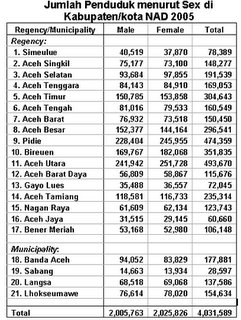

According to Yijing, the Mo-Lo-Yu kingdom was located at a distance of 15 days sailing from Bogha ( Palembang), the capital of Sribhoga ( Srivijaya).
#Nik data penduduk riau full
Malaya Dwipa, "Malaya Dvipa", is described in chapter 48, Vayu Purana as one of the provinces in the eastern sea that was full of gold and silver.Tengku Abd Aziz, the Prince of Terengganu in a classical formal Malay attire. The English term "Malay" was adopted via the Dutch word Malayo, itself derived from Portuguese: Malaio, which originates from the original Malay word, Melayu. It was applied to report the social partialities of the Malaccans as opposed to foreigners as of the similar area, especially the Javanese and Thais This is evidenced from the early 16th century Malay word-list by Antonio Pigafetta who joined the Magellan's circumnavigation, that made a reference to how the phrase chiara Malaiu ('Malay ways') was used in the maritime Southeast Asia, to refer to the al parlare de Malaea ( Italian for "to speak of Malacca"). The word "Melayu" as an ethnonym, to allude to a clearly different ethnological cluster, is assumed to have been made fashionable throughout the integration of the Malacca Sultanate as a regional power in the 15th century. The term is thought to be derived from the Malay word melaju, a combination of the verbal prefix 'me' and the root word 'laju', meaning "to accelerate", used to describe the accelerating strong current of the river. The epic literature, the Malay Annals, associates the etymological origin of "Melayu" to Sungai Melayu ('Melayu river') in Sumatra, Indonesia. Joget dance from the Malacca Sultanate, many aspects of Malay culture are derived from the Malaccan court. Ethnic Malays are also the major source of the ethnocultural development of the related Betawi, Banjar, Cape Malay, Cocos Malay and Sri Lankan Malay cultures, as well as the development of Malay trade and creole languages like Ambonese Malay, Baba Malay, Betawi and Manado Malay. They absorbed, shared and transmitted numerous cultural features of other local ethnic groups, such as those of Minang and Acehnese. Throughout their history, the Malays have been known as a coastal-trading community with fluid cultural characteristics. In the course of history, the term "Malay" has been extended to other ethnic groups within the " Malay world" this usage is nowadays largely confined to Malaysia, where descendants of immigrants from these ethnic group are termed as anak dagang ("traders") and who predominantly consist of the Acehnese, Banjar, Buginese, Minangkabau and Javanese people.

The golden age of the Malay sultanates in the Malay Peninsula, Sumatra and Borneo saw many of their inhabitants, particularly from various tribal communities like the Batak, Dayak, Orang Asli and the Orang Laut become subject to Islamisation and Malayisation. In literature, architecture, culinary traditions, traditional dress, performing arts, martial arts and royal court traditions, Malacca set a standard that later Malay sultanates emulated. Common definitive markers of Malayness – the religion of Islam, the Malay language and traditions – are thought to have been promulgated during this era, resulting in the ethnogenesis of the Malay as a major ethnoreligious group in the region. The advent of the Malacca Sultanate in the 15th century triggered a major revolution in Malay history, the significance of which lies in its far-reaching political and cultural legacy. Historically, the Malay population is descended primarily from the earlier Malayic-speaking Austronesians and Austroasiatic tribes who founded several ancient maritime trading states and kingdoms, notably Brunei, Kedah, Langkasuka, Gangga Negara, Chi Tu, Nakhon Si Thammarat, Pahang, Melayu and Srivijaya. There is considerable genetic, linguistic, cultural, artistic and social diversity among the many Malay subgroups, mainly due to hundreds of years of immigration and assimilation of various regional ethnicity and tribes within Maritime Southeast Asia. The groom is wearing a baju melayu paired with songkok and songket, while the bride wears baju kurung with a tudong.Ī Highly naturalized population of mixed origins, but using the 'Malay' identity A Malay couple in traditional attire after their akad nikah (marriage solemnisation) ceremony.


 0 kommentar(er)
0 kommentar(er)
